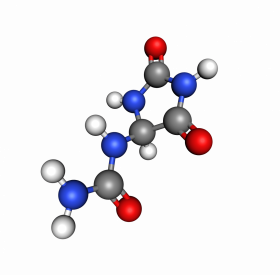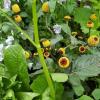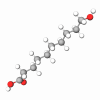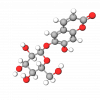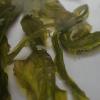A powerful emollient, skin protestant, and hydrating agent found in the leaf and roots of the comfrey plant, allantoin guards against transepidermal water loss to enhance skin’s moisture content and reveal a smooth, even tone. It is a white crystalline, odorless, and water-soluble powder.
Thanks to its extraordinary effectiveness Allantoin has been widely used for decades in cosmetic and skincare topical formulations. The most popular applications are in preventing and treating dry and chapped skin and lips. In addition, it is a skin protectant that protects injured or exposed skin or mucous membrane surfaces from harmful or annoying stimuli.
Allantoin is an ingredient that has a lot of benefits. Due to the main properties of allantoin - astringent and anti-inflammatory, it was included in the list of local anesthetics of the World Health Organization (WHO). But the abilities of this ingredient are not limited to just a few opportunities. The list of its skills that have a beneficial effect on the skin condition also includes at least more than three superpowers. It is a suitable method for stimulating the renewal of the epidermis, helping exfoliate dead skin cells, and preventing the appearance of blackheads.
Being a powerful antioxidant, Allantoin neutralizes the harmful effects of free radicals, accelerates tissue regeneration, and slows down cell aging. In addition, it promotes skin healing, restores its barrier properties, and that’s why it is a frequent ingredient in cosmetics for people suffering from dermatitis. It is useful in soaps, detergents, acidic or alkaline materials, mechanical means, or the environment that can irritate skin and lips. Allantoin helps alleviate and prevent symptoms of irritated and dry skin and lips. It is used in lotions, creams, protective creams, sun care & after sun products, shampoos, scalp rinses, shower gels, lip, and baby care products at 0.5 to 2.0% concentration.Ingredient products
FDA approved uses
The FDA has approved the use of 0.5% to 2.0% Allantoin for the following:
- Temporary protection of minor cuts, scrapes, bums, and sunburns.
- Prevention and temporary protection of chafed, chapped, cracked, or wind-burned skin and lips.
- Relief of dryness and softening of cold sores and fever blisters.
- Treatment and prevention of diaper rash and help protect/seal out wetness.
The FDA considers such explicit claims as drug claims. For example, when 0.5% to 20% Allantoin is added to cosmetic and personal care products and no claims are made related to Allantoin, the product remains a cosmetic.
The FDA does not recognize Allantoin as a wound healing agent.
What is the mode of action of allantoin?
Allantoin produces its desirable effects by promoting healthy skin. In addition, there is a postulate that it cleanses away necrotic tissue, speeding up the growth of new, healthy tissue. Since Allantoin stimulates new and healthy tissue growth, healing epithelization may occur.
It also has been described as a cell proliferant, skin epithelization stimulant, and a chemical debrider in texts such as the United States Dispensatory, Merck Index, and British Pharmaceutical Codex.
